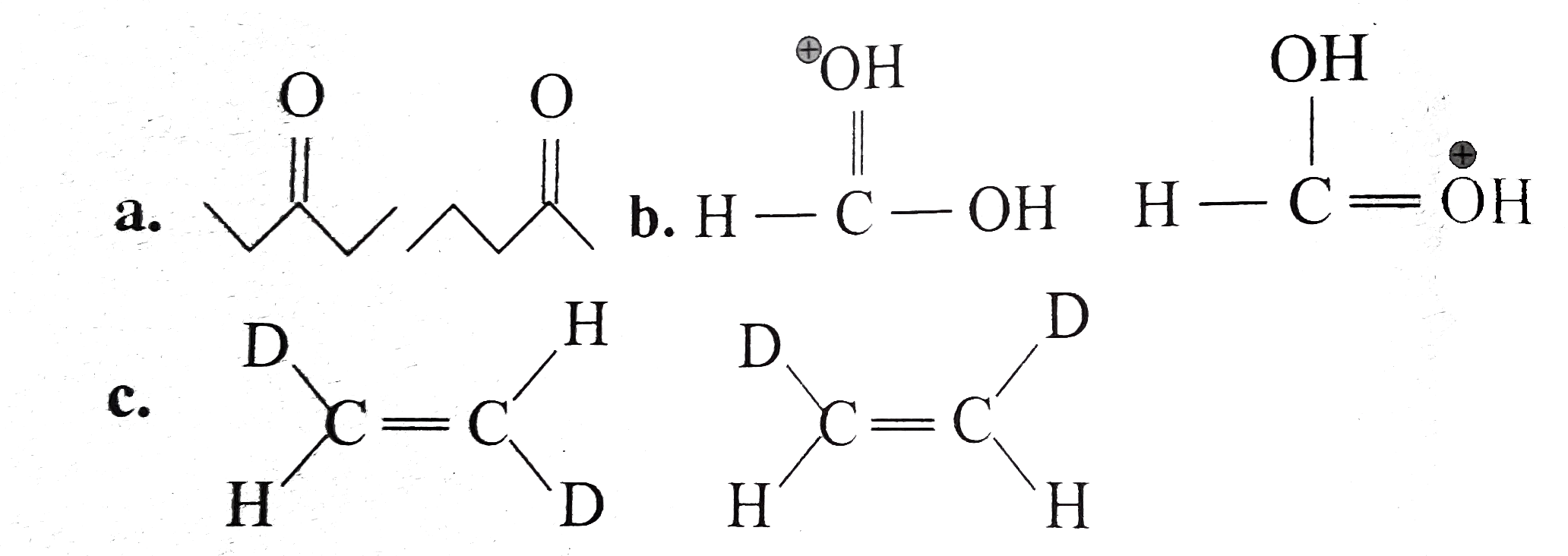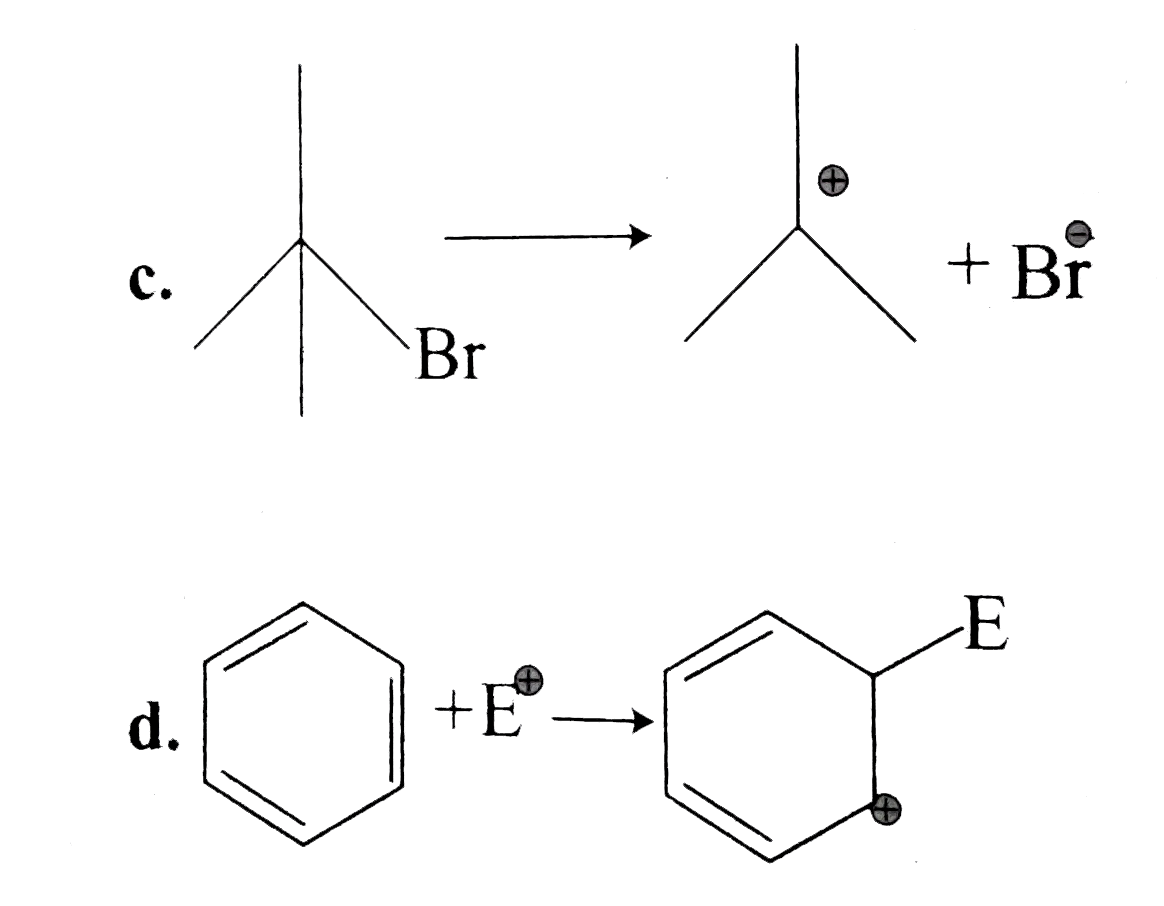Complete Solutions to Concept of chapter GENERAL ORGANIC CHEMISTRY of Class 11 book with complete answers and questions
| Class 11 | CHEMISTRY |
| Chapter | GENERAL ORGANIC CHEMISTRY |
| CENGAGE CHEMISTRY | Concept |
| Number Of Questions | 16 |
| Academic Year | 2023-24 |
Using the curved-arrow notation, show the formation of reactive intermediates when the following convalent bonds undergo heterolytic cleavage :
(a) `CH_3 - S - CH_3`
(b) `CH_3 - CN`
( c) `CH_3 - Cu` .
View SolutionCategorise the following molecules/ions ad nucleophile or electrophile.
(1) `HS^(Ө)`
(2) `BF_3`
(3) `C_2H_5O^(Ө)`
(4) `(CH_3)_3 ddot N`
(5) `C1^(Ө)`
(6) `CH_3 - overset (oplus) C = O`
(7) `:overset (Ө) NH_2`
(8) `overset (oplus) N O_2`.
View SolutionIdentify electrophilic centre in the following :
(1) `CH_3CH=O`
(2) `CH_3-CN`
(3) `CH_3 I`.
View SolutionWhich bond is more polar in the following pairs of molecules ?
(a) `H_3C-H,H_3C-Br`,
(b) `H_3C-NH_2,H_3C-OH`
( c) `H_3C-OH,H_3C-SH`.
View SolutionIn which `(C - C)` bond of `(H_3 overset (3)C - overset (2) C H_2 - overset (1) CH_2 - Br)`, the inductive effect is expected to be the least ?
View SolutionWrite the resonance structures of `(1) CH_3 COO^(Ө)` and `(2) CH_2 = CH - CHO`. Indicate the relative stability of the contributing structures.
View SolutionExplain why the following two structures `(I)` and `(II)` cannot be the major contributors to the real structures of `CH_3COOCH_3`.
 .
.
View SolutionExplain why `(CH_3)_3C^(oplus)` is more stable than `CH_3 overset (oplus) C H_2` and `overset (oplus) C H_3` is less stable.
View SolutionDraw the complete structures of bromomethane, bromethane, 2-bromopropane, and tert-butylbromide. Arrange them in the order of increasing steric hindrance.
View SolutionWhich is expected to be more stable,
(I) `O_2NCH_2CH_2O^-` or
(II) `CH_3CH_2O^-` any why ?
View SolutionDraw the resonance structures for the following compounds. Show the electron shift using curved-arrow notation.
(a) `C_6H_5OH`
(b) `C_6H_5NO_2`
( c) `C_6H_5 overset (oplus) CH_2`
(d) `CH_3CH=CHCHO`
( e) `CH_3CH=CH-overset (oplus) CH_2`
(f) `C_6H_5CHO`
(g) `CH_2=CHOCH_3`.
View SolutionExplain why alky1 groups act as electron donors when attacted to a `pi-system`.
View SolutionClassify the reagents shown in bonds in the following equations as nucleophilies or electrophiles. Use curved-arrow notation to show the electron movement.
(a) `CH_3COOH + HO^(Ө) rarr CH_3COO^(Ө) + H_2 O`
(b) `CH_3COCH_3 + NC^(Ө) rarr CH_3C(CN) OHCH_3`
( c) `C_6H_6 + CH_3 overset (oplus) CO rarr C_6H_5COCH_3`.
View SolutionClassify the following in one of the reaction type studied.
(a) `CH_3CH_2Br + HS^(Ө) rarr CH_3CH_2SH + Br^(Ө)`
(b) `(CH_3)_2C = CH_2 + HC1 rarr (CH_3)_2 C1C - CH_3`
( c) `(CH_3)_3 C - CH_2OH + HBr rarr (CH_3)_2 CBr CH_2 CH_3`
(d) `CH_3CH_2 Br + HO^(Ө) rarr CH_2 = CH_2`.
View SolutionWhat is the relationship between the members of the following pairs of structures gt Are they indentical, structural, or geometrical isomers, or resonance contributors ?
 .
.
View SolutionFor the following bond cleavages, use curved-arrow to show the electron flow and classify each as homolysis or heterolysis. Identify intermediate products as free radical, carbocation, and carbanion.
(a) `CH_3O - OCH_3 rarr CH_3 dot O+ dot O CH_3`
 .
.
View Solution
Concept questions and complete solutions for chapter GENERAL ORGANIC CHEMISTRY of CENGAGE CHEMISTRY (HINGLISH) of Class 11